|
April is a time of great hope in the garden. After almost six months with no green, everything is coming back to life. I love the tulips and other bulbs. The first flowers of spring bloom for such a short time, but their bright colors are vivid against the fresh green new growth. The honeyberry plants in the picture above are the first bush to bloom. I love the sweet tart fruit that comes so early in the season. Bumble bees love them too. The robins have already staked a claim to the berries that will be coming, I'll get a few, and the robins will get the rest.
The Big Picture in the Backyard Garden
The branches are still mostly bare, and the blooming plants are small but there is a lot going on if you look close. Our greenhouses are up and filled to the brim with tomatoes, peppers, herbs, and other garden favorites. The strawberries we planted in the garden boxes as a holding place last fall are looking really happy. We have to find new homes for the strawberries soon so we can plant the garden. The plums and pears are just beginning to bloom in the orchard, and daffodils are enjoying their moment of glory on the hillside. The little red spots are the flags marking the location of our underground utility lines so we don't hit one while digging in the yard or garden this spring. I liked the red flags mixed with the daffodils, so I'll try to find some red bulbs to plant this fall.
Spring Bulbs in Full Bloom
Nothing cheers me up and gets me excited about spring as much as early spring bulbs. They last just a little while in the cool spring and then everything grows up around them and I forget I planted them until it starts to warm up again next year. Every time I go outside I look for signs of spring - swelling buds on otherwise barren branches, a hint of green to the lawn the first time it rains instead of snows, and the tips of these spring bulbs bursting through the earth to tell me that winter will not last forever.
Blossoms That Promise Fruit is ComingGreenhouses and Porches are Stuffed with Plants
We usually put the greenhouses up at the end of February. This year with all the snow on the ground we waited until the middle of March. It hasn't been as cold as last year. If it does get cold the propane heaters keep everything toasty warm and the temperature sensor lets us know when it is too cold or too hot. Watering everything takes a couple hours each day, but it is like therapy to be in the greenhouse bursting with plants. Some of these plants are already spoken for and just waiting till they can be planted out. If you are local there are still plenty left to choose from. Just check out the Google Doc on the plant sale page to see what is still available!
DISCLOSURE: Some of the links below are affiliate links, which means that at no additional cost to you, we will receive a commission if you click through and make a purchase. We will only recommend products that we actually buy and use!
Perennial Plants Start the Season OffThe Fun Just Keeps Coming!
Every winter, we look for other plants we can grow. They start arriving now and we have to scramble to find places for them. We still have the fall sales plants tucked into holding spots in the garden beds with the extra strawberries, currants, lingonberries and aronia berries. This year we are trying to grow paw paws from seed. We picked up an extra Josta berry at a farm store and ordered apricots to replace the ones that I thought had died in our bitter cold (they didn't). This year we are trying new varieties of black and white currants, cherry plums, and hazelberts. We traded scions for cuttings of 8 different types of figs, two types of elderberries, and got a whole bunch of aronia berry cuttings too. We have cuttings growing for more currants and elderberries and I don't remember if there is anything else coming. There probably is. Oh yes, my youngest helped me plant 100's of flowers for a cut flower garden that I haven't found a place for yet. How many mammoth sunflowers do you need to make a 12-foot hedge? I probably have enough. Our motto seems to be "we'll find room for it somewhere." Anyway, April is almost over and spring is in full swing. Get outside and plant something fun and we'll visit again soon and I'll let you know if we found a place for everything!
I visited with some friends and fellow gardeners recently and discovered we all love to try new tomato varieties, but we pick them for very different reasons. Some pick based on the story behind the variety. Some look up reviews and get recommendations from other gardeners. Some choose a variety based on its flavor, looks, or the pattern of its leaves. Some pick a variety based on what they plan to use it for - canning, slicing, snacking, roasting or stuffing. We grow about 50 varieties every year, and it is just a drop in the bucket compared to the number of varieties available. So how do I choose from so many? Heirloom Vs. Hybrid TomatoesWe grow several heirlooms and I love all of their flavor and personality. But what does it mean when someone says heirloom? In a general sense an heirloom is something of value that is passed down from generation to generation. Many heirloom varieties have great stories attached to them for this reason. An heirloom plant is open-pollinated and grows true to type which means that if you save seeds from an heirloom plant you can plant those seeds and get the same type of plant again. If it grows true to type for several generations then it is an heirloom variety. If you want to save seeds, make sure that you pick an heirloom tomato to plant. So, why doesn't everyone grow heirloom tomatoes? Everyone used to until breeders developed hybrid tomatoes. Hybrids have advantages that heirlooms don't. Hybrids are more uniform from plant to plant, generally have better yields, are less prone to cracking and splitting, and have better disease resistance. Commercial growers use hybrids so they can time their tomato harvests which allows them to efficiently harvest their tomatoes. We notice that most hybrids yield earlier than comparable heirlooms which means you can have a larger harvest. Some hybrids store longer and have a more consistent tomato size which makes them more marketable and easier to manage when processing. All of those things sound great too, so why don't we all grow hybrids? Some people think hybrid means GMO, but it doesn't. You can buy organic hybrid seed just like you can buy organic heirloom seeds. Tomatoes are self pollinated and don't readily cross-pollinate with other varieties. Hybrids just means that someone selected one variety to be the female parent and another variety to be the male (pollen) parent of the seed you are growing. You could do that yourself if you wanted and make a whole new variety and name it yourself. The crossing between two different varieties, sometimes makes a super kid and those plants are worth planting. We grow lots of hybrids. I love the consistent performance and disease resistance. The issue with hybrids is that if you save seeds from those tomatoes and plant them next spring, you won't get the same plant. If you want to get the same plant, you have to buy seeds again. Some newer hybrids are great as breeders are making plants that combine some of the classic heirloom flavors with the increased disease resistance and consistent performance of a hybrid. One example I grow is called Brandy Boy. It is a cross between Brandywine (super flavor but little disease resistance) and Better Boy (better yield and disease resistance). Brandy Boy has the best qualities of both parents - very flavorful with an earlier and higher yield. My advice? Heirlooms are great if you will spend a little more time to make sure you take excellent care of them. They have great flavor and fun personalities. They come with great stories and history, and some of them are very tasty. They can be more difficult to grow and they aren't always consistent in their yield. If you have diseases, or you want a bumper crop of tomatoes that are uniform for preserving or can't spend much time maintaining a garden, pick a hybrid. There are lots of great choices out there! Indeterminate Vs. Determinate Tomatoes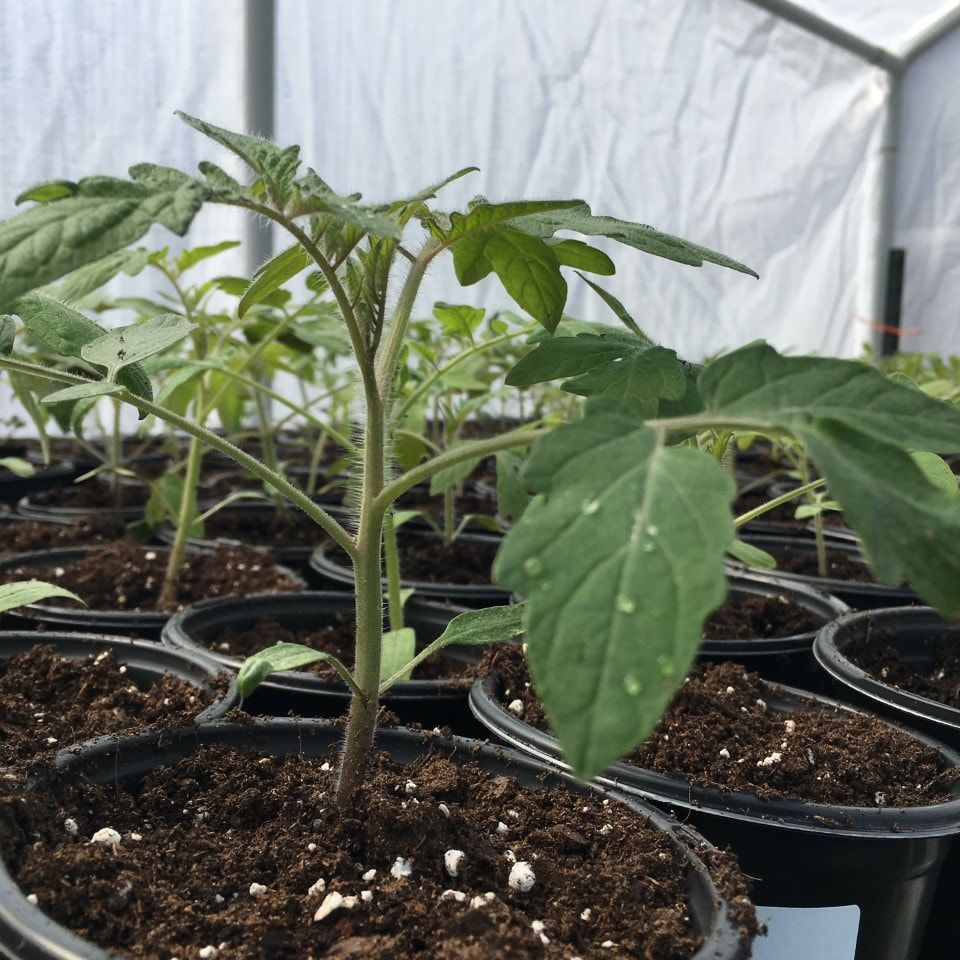 Tomato seedling in the greenhouse. Tomato seedling in the greenhouse. Can I tell you a story? I didn't used to pay attention to the differences between determinate and indeterminate until I started vertical gardening with the T-frames we use now. Some years ago, I had started my seeds indoors and they were beautiful. Steven was watching YouTube videos on how to increase yields from our garden and found the Mittleider vertical gardening system. He thought we should try it so he built a T-frame and set it up in the garden. I planted all my beautiful seedlings, and then I read the details. Determinate tomatoes: 1. Are predisposed by their genetics to grow a certain height and set a certain amount of fruit. 2. Usually fruit earlier in the season and for a shorter amount of time. This can be perfect for canning, when you want a lot of tomatoes all at once. 3. Tend to grow bushy and are shorter that indeterminate tomatoes. 4. Work well if you don't want to stake tomatoes, or make big cages. However, determinate varieties are not ideal for growing pruned to a single stem up a trellis. For that we needed an indeterminate variety, so we ran to some stores to see what we could find. I replaced all my determinate tomatoes for a grab bag of indeterminate plants. Lots of these turned out to be heirlooms that I loved. Indeterminate tomatoes: 1. Are not limited to a certain height or yield by genetics. They keep growing as long as the conditions are favorable. Mine can grow 12 feet tall in our garden, and I have seen them 30 feet tall in hydroponic greenhouses. 2. Need a larger space and a trellis or tomato cage to keep them off the ground. 3. Would have a hard time in a patio pot since they grow so tall. Many tomato varieties are indeterminate which provide tomatoes until the plant is killed by disease or frost. We list which variety is which on our spring plant sale page, or a quick search online can help you figure out whether your favorite tomato is determinate or indeterminate. Does color or shape influence tomato flavor?This is the fun part, and there are so many options! Tomatoes are edible art. I have grown red, purple, green, black, pink, yellow, orange, and stripes. The color doesn't guarantee the flavor, but it is an indicator. I find that: 1. Red tomatoes have a classic tomato flavor, sweet and acidic. The redder the tomato, the more acidic it tends to be. 2. Pink tomatoes tend to be a little milder than red. 3. Yellow and orange tomatoes tend to be even sweeter and less acidic than pink and red tomatoes. 4. Purple/black tomatoes have a earthy smoky flavor. 5. Green tomatoes tend to be sweet with a little zing. As far as shape goes, ox heart tomatoes don't have many seeds but are still great to eat fresh and I love them for canning. An elongated shape is classic for paste tomatoes. They tend to be a little drier, which is great for sauce. Big round beefsteaks are going to be juicy. Cherry tomatoes have a higher skin to inside ratio, which is not ideal for saucing as they have more seeds and skin to flesh, but smaller varieties can be great for making sun-dried tomatoes or holding their shape in salads, pastas and snacks. What about performance reviews for tomatoes?When deciding whether or not to add a new tomato variety to our garden we do a quick Google search to check out the reviews. Remember to factor in the effects your location and climate. I picked a tomato last year that had great reviews, but it originated from a hot, dry desert climate and most of the reviews were from the arid west. It did not do well in the humidity and rain of the Midwest. Tomatoes that perform well for me here in Iowa, do not do as well in the higher, colder, shorter season in Colorado. If you are looking for credentials, an AAS (All-America Selection winner) tag means that the tomato has been tested and judged to perform well across the United States. You might recognize Celebrity or Big Beef in this category. Seed catalogs often post reviews too. One review might not mean anything, but if you start seeing a trend, like this tomato cracks easily, then you will want to take note. What if this tomato has a great back story or history?This is where I have the most fun, and the most trouble. I love a tomato with a good back story, but I have to remember that a good story does not guarantee a great tomato. For example, I tried Nebraska Wedding tomato last year. I love a good orange tomato, and it had a good story about Nebraska brides being given this tomato as they set up home. It was a great story, and Nebraska is not far from here, so I tried it. It did not live up to the hype. I had 4 other yellow/orange tomatoes that did better. So, this year, it is off the list. Good story or not, it has to grow well and taste good to get planted in my garden the following year. Don't be afraid to try something new, and don't hesitate to replace it if its not working. While it may be really cool to plant a variety with a story, breeders are coming up with new varieties all the time. If you know what they are trying to accomplish and what parent stock they are using, you can find some great new tomato varieties. I love that breeders are crossing those fabulously flavored heirlooms with high performance tomatoes and I look forward to trying more of these. This year we are trying Paisano (a determinate version of the classic indeterminate San Marzano), Mountain Rouge (has pink Brandywine in its lineage but with less cracking and is ready to harvest nearly 3 weeks earlier), and Chef's Choice Orange (an updated version of the classic Amana Orange that is ready to harvest 2 weeks earlier than the classic) in our line up of these new varieties. When picking a tomato to grow keep the end use in mindWhen people ask me what kind of tomato they should plant, the first question I ask is "what are you planning to use it for?" If you can hundreds of quarts of tomatoes and sauce like I do each year, then you will want tomatoes that promises a large yield and uniform fruit. I love the heirloom lumpy rippled look, but it is a real pain when I am trying to peel hundreds of them. I also love a great big juicy beefsteak tomato, but if you are making spaghetti sauce, all that watery juice and seeds in your sauce might not be what you want. A good paste or ox-heart tomato will be much thicker and less seedy. If you love a fresh sliced tomato, a paste tomato will be too dry, and if you are wanting to roast tomatoes for soup, remember that those black and purple tomatoes that are amazing freshly sliced, will make your sauce look an unappetizing brown when they are blended together. Keep the end use in mind when planning what to plant and you will be much happier. Garden space & light requirements for tomatoesLast on the list, but one of the first things to consider is what kind of space you will be growing in. We covered indeterminate and determinate above. Remember that you will need a trellis or large tomato cage for an indeterminate tomato, but they can be pruned to grow up and not out. Determinate tomatoes should not be pruned the same way, and they will be bushy. Don't forget to consider sunlight requirements. If you have a shady backyard with only 3-4 hours of direct sunlight plant a smaller fruiting tomato like a cherry or grape tomato. If you want to plant cocktail tomatoes, make sure you have at least 4-5 hours of sunlight. Slicer tomatoes require 6-7 hours, and beaksteaks require at least 7 hours of sunlight to get maximum production. Don't worry if your garden spot only receives a few hours of direct sunlight as there are many varieties of various shapes and colors that will produce very well with just a few hours of direct sunlight. If your garden gets 7 or more hours of direct sunlight then you've won the "tomato jackpot" as you can grow any size of tomatoes you want and they should produce well. My last advice is if you have the space try a few different varieties. You will sort out pretty quickly which ones work well for you and if you get a bumper crop you can always share it with your neighbors. The nice thing about gardens is that there is always next season to try again!
Let the 2019 gardening season begin! The warm weather has melted away all the snow and the rain is starting to turn everything green. The early spring bulbs are up and we are ready to get going. We will be planting things like onions, peas, celery and potatoes as soon as we can get into the garden, but the warm season crops like tomatoes and peppers shouldn't be planted until the soil and the nights are a little warmer. We have just posted our 2019 plant list. If you want healthy, locally-grown (our backyard), pesticide-free plants ready to plant in May, check out our selection and email us your order at iowabackyardfarmer@gmail.com. Supplies of each variety are limited, so order early for the best selection. We will confirm their availability and reserve them for you to pick up and pay for when you are ready to plant them in May. We grew all the peppers and most of the tomatoes on our list in our own backyard last year and we planted our favorites again this year. Since we dropped a few varieties that didn't taste or perform up to our standards, we are trying some new ones too! Gladiator and Super Sauce are paste tomatoes that looked good in the seed catalogs and had good reviews, so we thought we would give them a try. We couldn't keep up with the demand for grape and cherry tomatoes last year so we are adding Blush, Chiquita, and Red Pearl this year. Ruby Monster is a determinate tomato good for pots and small spaces. We have grown it before and really liked them so we brought them back this year. We have also added some other fun plants including: Chelsea Watermelon- This Iowa native sounded like a fun plant to try Cinnamon Basil- spicy almost cinnamon flavor Lime Basil- sweet with a citrus flavor My Favorites From Last Year We sell a large variety of tomatoes and peppers because I love variety, and each variety has its place. That being said, last year some varieties out-performed the others. Here is how the new varieties and standouts performed last year. Tomatoes Better Bush: This was new to me last year and I almost gave up on it early last year because it was slower to get growing, but once it did it grew fantastic large tomatoes on a very compact bushy plant. They did not crack or split and tasted great. It was a great tomato for a small space. Great yield too. Amana Orange, Orange Wellington and Dr. Wychee's yellow: Red tomatoes are great and I love all the ones we sell, and I grow lots of tomatoes for canning, but when I want a fresh eating tomato I always include one of these, and I do not share very many. These are big, meaty (not too many seeds), and have fantastic flavor. When it comes to fresh eating flavor, the yellow/orange beefsteaks are my favorite. We will be growing these again this year. Honey Delight and Mountain Magic: We tried these last year for the first time. These cocktail sized tomatoes are just the right size for a snack or a salad. Mountain Magic is the Campari tomato that you can buy in the store. It is one of the few I buy fresh in the winter. Honey Delight is just what it says, sweet and delicious. I sometimes pick a bowl and slice them for breakfast. They were vigorous growers and had a good yield. Peppers Golden Baby Bell and Yummy won the garden candy award. Small snack size hybrid peppers that are juicy, crunchy, and perfect. It was hard to share, and most of them were eaten in the garden while watering. Golden baby bell starts out growing slow, but it makes up for it later with amazing flavor. Red and Yellow Marconi We tried these as a request last year and they quickly became a favorite. These heirloom peppers are so sweet and delicious. I used them in salads and ate them fresh, but I loved them most on a basil pesto pizza. King of the North I tried these as a last minute idea and was surprised that this heirloom bell pepper did even better for me than the California wonder. It was a vigorous grower with good yield, and turned a great shade of red when I didn't eat them green. Ajvarski was one of the first and last peppers I picked last year. It was an instant win. It has a thick sweet flesh that was great for cooking. I froze a bunch of these sweet red peppers and we have been eating them all winter and can't wait to grow them again. Not sure which one to pick? Try several!
|
Archives
April 2022
Categories
All
|
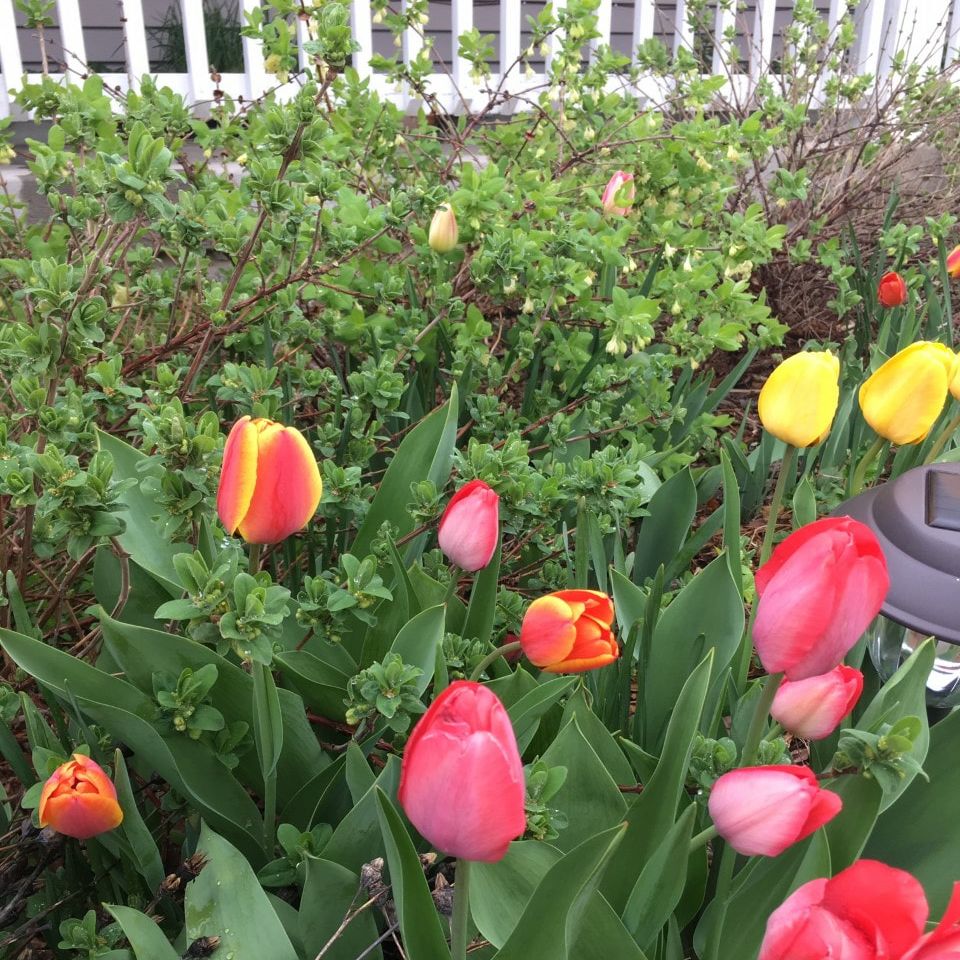



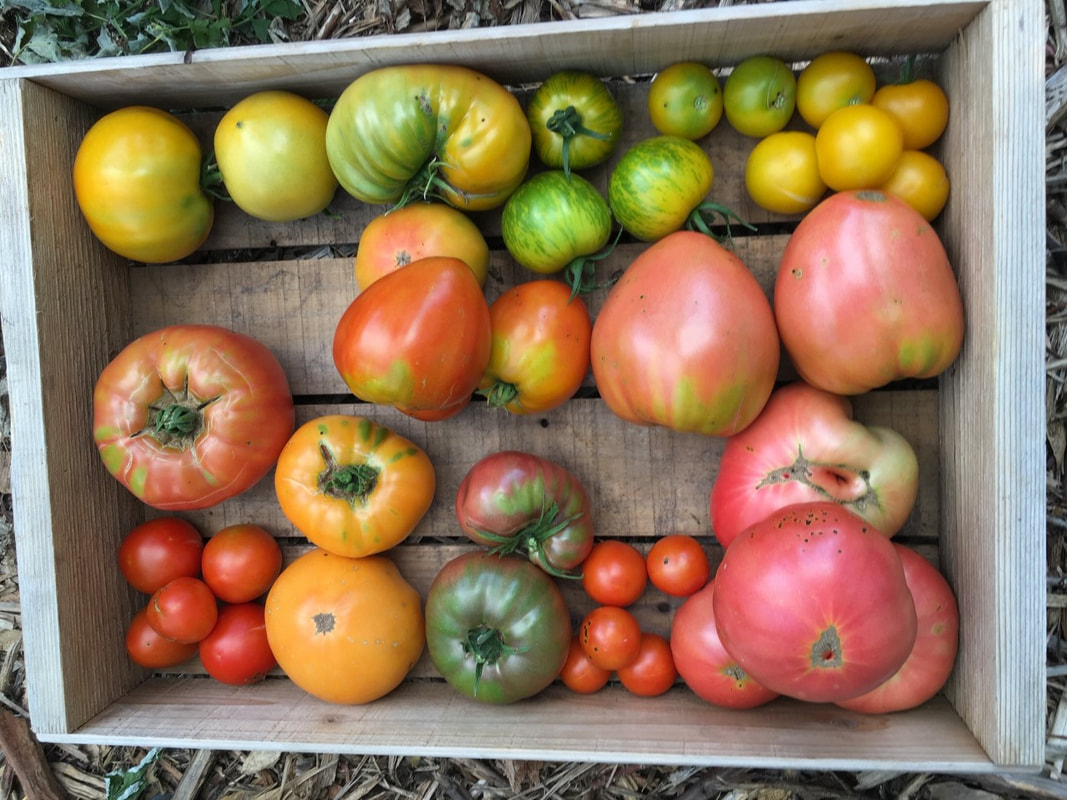
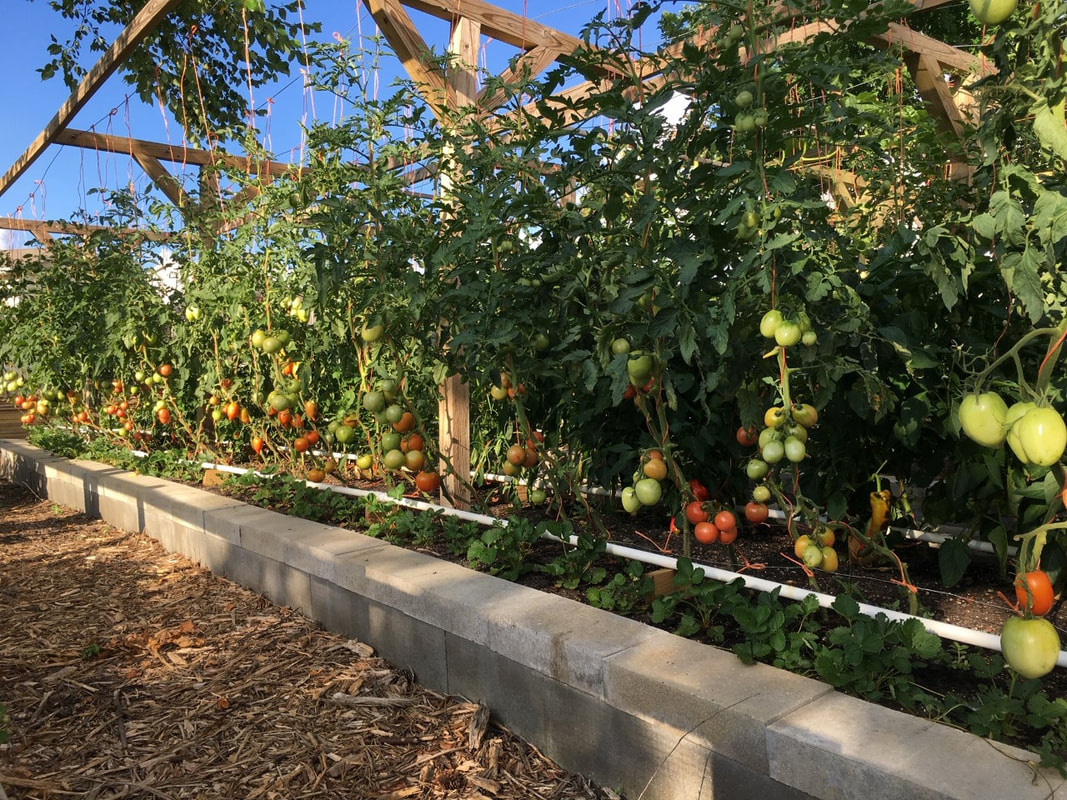
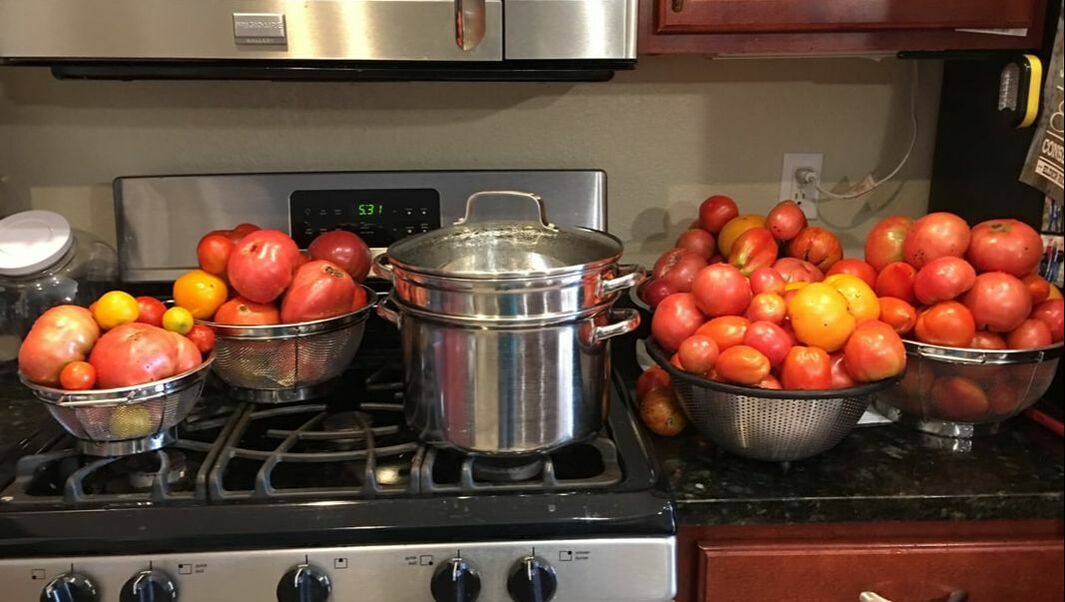
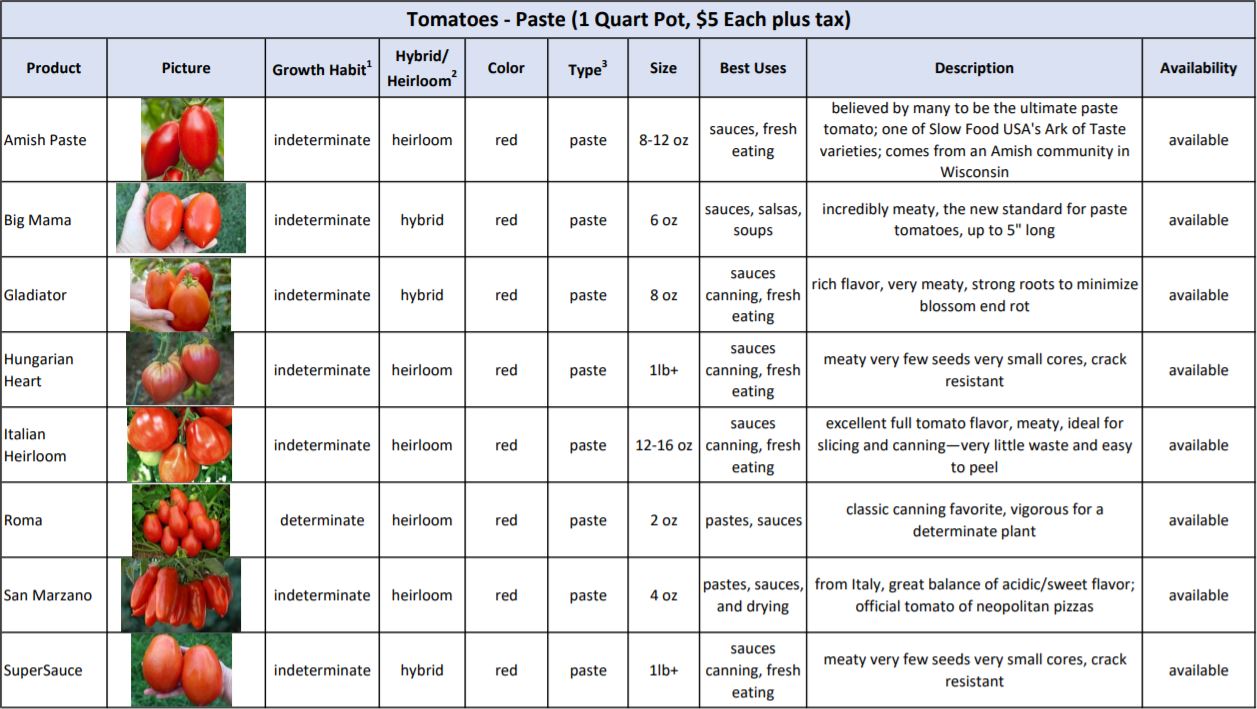
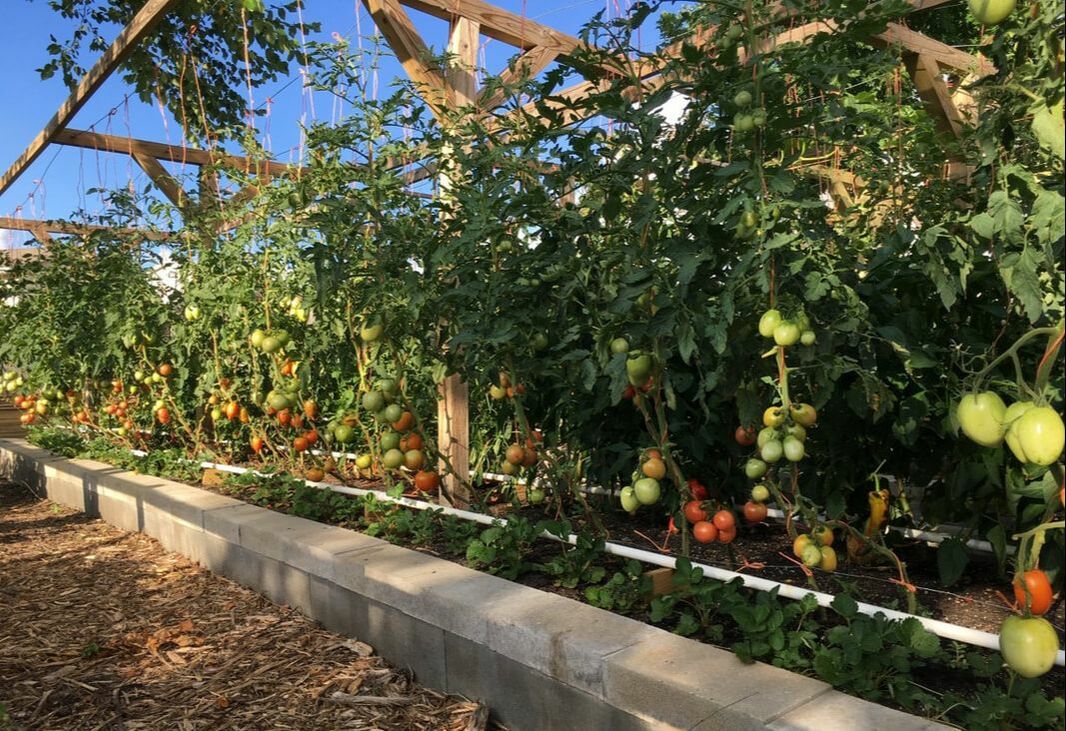
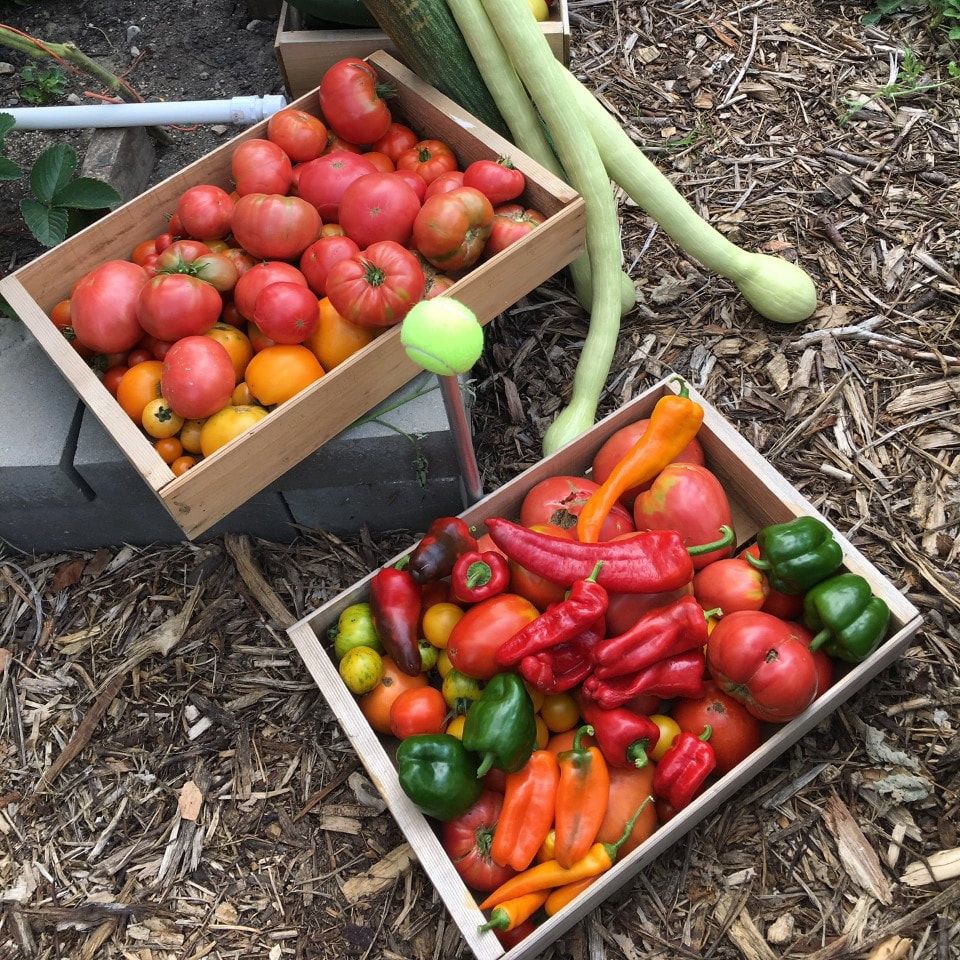
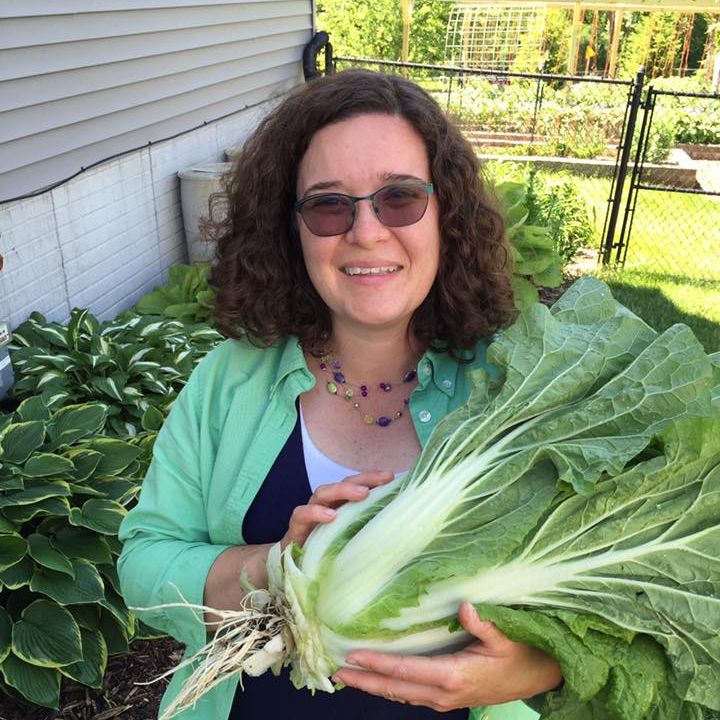
 RSS Feed
RSS Feed